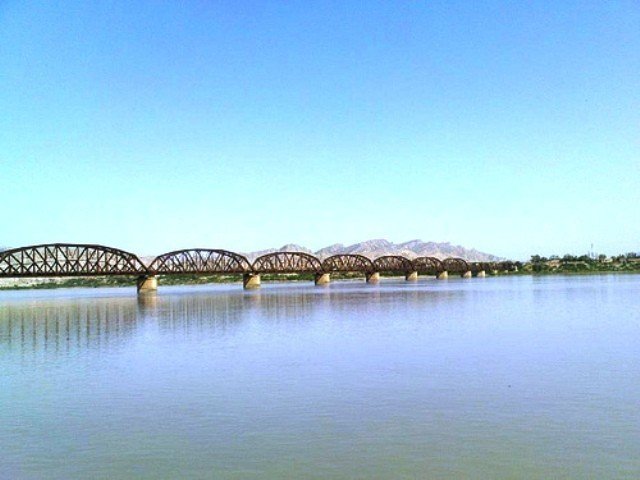
PART-1
Pakistan is a water rich country but, unfortunately, its energy market investment in hydel power generation has been caught up in confusion and paradoxes for more than a decade, and no significant progress has been achieved so far. On the other hand, the Government is trying to facilitate private investors to promote hydel power generation in the country. Hydropower is a primary domestic source of energy. Pakistan is endowed with a hydel potential of approximately 41722 MW, most of which lies in the North West Frontier Province, Northern Areas, Azad Jammu and Kashmir and Punjab.
Energy is the lifeline of an economy and is a vital input to sustain industrial, commercial and domestic activities. Energy disruptions and energy shortages not only result in loss of economic growth and employment but adversely affect social cohesion in the society. The energy crisis in Pakistan had been brewing since 2007 and deepened in 2013, which hugely negatively affected the economic growth and employment. Absence of effective planning, an economically and financially viable strategy and incapacitated regulator resulted in supply-demand gap. The situation has been further compounded due to high transmission and distribution losses, development of black-market for power and declining revenue collection. This led to persistent accumulation of circular debt. Consequently, the federal budget had to absorb huge quantum of subsidies to bridge the financial gaps in power sector threatening the fiscal stability on the one hand, and increasing the public debt. A synopsis of the governments economic performance in its first year in power sharply contrasted with Finance Minister Ishaq Dars claims that the economy was on a path of revival as almost all key economic targets fell short highlighting the consequences of delays in introducing tough structural reforms. Though the gross domestic product (GDP) rate crawled up to 4.1 per cent for the first time in the last six years, it fell short of the targeted rate of 4.4 per cent for the fiscal year 2013-14. The countrys per capita income grew at a dismal 1.4 per cent to $1,386 per person.
Run-of-the-river hydroelectricity (ROR)
Run-of-the-river hydroelectricity (ROR) is a type of hydroelectric generation whereby a considerably smaller water storage called poundage or none is used to supply a power station. Run-of-the-river power plants are classified as with or without poundage. A plant without poundage has no storage and is, therefore, subjected to seasonal river flows and serves as a peaking power plant while a plant with poundage can regulate water flow and serve either as a peaking or base load power plant. Pakistan could have been rid of crippling circular debt and heavy loadshedding had the Ministry of Water and Power completed 18 hydropower projects in time, 15 in 2007 and three in June last year. But the government is still not interested in utilizing the cheap hydro-electricity, which is only 37 paisa/Kwh. The Ministry of Water and Power prepared a plan to build 15 run-of-river projects with a capacity of 1,258MW, scheduled to be commissioned by June 2007, but still they are not getting any attention from the government. The whole emphasis is over thermal power generation. If still not given priority the energy crisis could rise to 10,000MW over a couple of years.
The delay in the completion of 1,848MW Neelam-Jhelum and Chakothi-Hattian projects in Pakistan-administered Kashmir and Kohala project on the Jhelum, which were scheduled to be commissioned in June 2010, spoke volumes about the governments lack of interest in pursuing hydropower plans. In spite of the targets set in 2002, only the 86MW Malakand-III project has been completed during the past eight years, increasing the installed capacity of hydropower projects to 3,226MW.
Had all the 18 projects been implemented, Pakistan would have had 4,210MW of cheap hydroelectricity to keep the wheel of economic growth turning. The country has hydropower potential of over 120,000MW, of which 56,773MW is exploitable. However, it has only been able to tap 6,703MW. This is about six per cent of the potential and 32.8 per cent of the energy mix. “Hydroelectric power is the most reliable energy source, even more than wind and solar which have capacity factors of only 12 per cent and 25 per cent, respectively. In comparison, the hydroelectric plants have factors of 45 to 50 per cent,” The ministrys latest initiative of building small dams to bring about a revolution. “This assertion is propaganda, since the country will gain only 7MW and 300,000 acre-feet of water after spending Rs31 billion.” The argument that hydropower projects took too long to execute was weak in light of modern project management practices in the sector. It is strongly recommended that the national policy should shift from high-cost power generation to low-cost hydroelectricity. “Bad governance and intuitional weakness have reduced the hydro-thermal mix from 67 to 32 per cent at a huge cost.”
On the other hand our India completed the Salal and Dulhasti hydropower projects at an average cost of $3.28 million and $2.12 million per megawatt, while Kishanganga, Chutak and Nimmo-Bazgo projects are under construction at $2.57 million, $3.18 million and $3.28 million per MW respectively. Despite an abnormal inflation, the average capital cost in Pakistan is $1.5 million per megawatt, much cheaper than in India.
Hydroelectricity, which is a clean and renewable form of energy, costs only 37 paisa per kWh and is by far the cheapest source of energy for the country. On the contrary, the ministry had made abortive attempts to import electricity at a much higher cost.
An attempt was made to import electricity from Tajikistan through a 650km transmission line, but attention was not paid to three multipurpose hydropower projects in the Federally Administered Tribal Areas which were 30km from the national grid and could add 1,315MW to the grid, the 740MW Munda project in Mohmand Agency, 400MW Kalangi project and 175MW Khazana project.